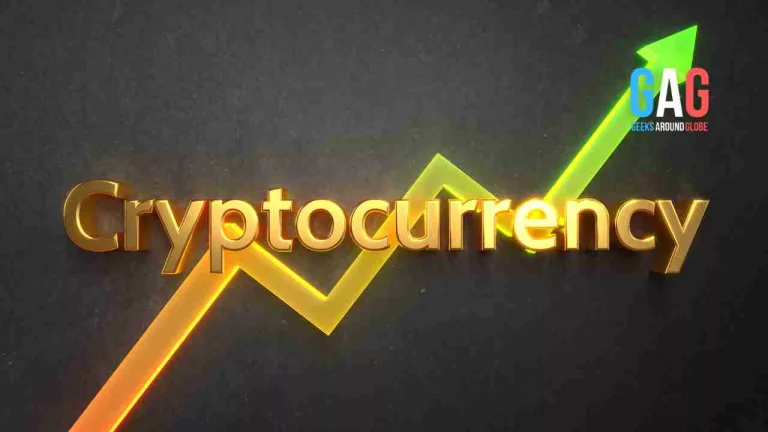The year is 2023. Despite trading lower, cryptocurrencies have become a staple in any financial medium’s newsfeed. Furthermore, all major investors have put money into blockchain tech. Despite some hiccups in the past couple of years, crypto continues to be the talk of the town.
Does it ever feel like everyone knows all about crypto except for you? Well, it’s time to change that! Don’t let a few long words discourage you; digital currency is not that difficult to wrap your mind around.
Instead, grab a drink, sit back, and let us give you a quick overview of digital assets and how they work. We’ve put everything you need to know about crypto in this short, beginner-friendly guide. Shall we begin?
What Is Blockchain Technology?
We have to start at the beginning. Though blockchains and crypto tokens are not the same thing, it’s impossible to understand the latter without the former.
Despite what newbies might think, blockchains are actually quite simple! Imagine information that’s broken down into little chunks or blocks. Now, add a chronological order to these blocks and link them in the correct order. Congratulations, you’ve got yourself a blockchain!
Most famous blockchains, like the Bitcoin network, are distributed ledgers. In other words, the blocks of info simply record transactions. The block says who paid what to whom, when, and so forth. Every time someone else decides to do another transaction on the network, it must be recorded similarly. That’s why new blocks are created all the time.
Moreover, blockchains are famous for their high degree of security and anonymity. This is because all the info in the blocks is encrypted. Even though a transaction signifies who paid what, the info is reduced to code, so no one looking at it can actually read anything meaningful from it.
Furthermore, each user in the network has a copy of the record of transactions. Thus, if one person decides to trick the blockchain and, say, lie that they have 1000 Bitcoins in their account (when they don’t), all the other nodes in the blockchain can say, “Wait, that’s not what my copy says.” With enough nodes flagging that piece of info, the transaction will be denied and won’t enter the blockchain. That user won’t magically get 1000 BTC out of nowhere.
Blockchains can be used to record other kinds of info too, but the ledger scenario is the most common for now.
What Is a Cryptocurrency?
Digital currency is a means of exchange that exists directly on the blockchain. Cryptos don’t have any physical form. More importantly, they also are not under the control of any central bank or regulator.
Instead, crypto coins are fully decentralised. The whole blockchain network is responsible for the supply and distribution of coins. The latter is decided according to each chain’s consensus mechanism – a mechanic built into the network by its developers.
Common examples of consensus mechanisms include Proof-of-Work and Proof-of-Stake. PoW measures how much power each user invests into the network. In other words, people with extremely powerful computers (or multiple PCs) are capable of processing more transactions. That means they do more work than weaker devices, and so they receive a higher reward. Bitcoin uses this mechanism.
PoS is an alternative protocol that asks users to stake a large sum of their coins to earn the right to validate transactions. Sort of like paying your way in; this method doesn’t depend on computing power. Thus, it is more environmentally friendly than PoW. Many of the newer blockchains use it. Even Ethereum switched to PoS recently.
Based on the network’s protocol, users receive crypto tokens (or portions of them) while their devices keep the blockchain safe.
Why Do Cryptocurrencies Exist?
Keeping track of all the transactions and ensuring no deceptive blocks enter the chain is hard work. The entire blockchain network depends on its users (or nodes) for its safety. But who’d do that kind of work for free?
Here is where cryptocurrencies come in! Made entirely of code that exists on the blockchain network they belong to, crypto tokens offer a means of exchange to the users. It’s traceless, anonymous, secure, and fast (usually).
What’s more, with consistent use of the network, users receive cryptocurrency as a reward for keeping the network safe. That is what people call mining or minting new crypto coins. You could say the main reason cryptos exist is precisely to incentivise users to look after the blockchain.
But that’s just why crypto was created. Now that it exists, an entire decentralised economy has sprung to give it more applications. It’s like someone said, “Hey, I have all of these Ether coins; what can I do with them?”. Then, developers rose up to the task of inventing meaningful ways for people to use their cryptocurrencies.
What Can You Do With Crypto?
The answer to that question is manifold. It largely depends on whether you look at crypto directly on the blockchain or separate it from it and see it as a real currency. Let’s look at some common uses for crypto below.
Fiat Currency Alternative
Perhaps the most obvious (but also most difficult to understand) way of using virtual currency is as an alternative to money. Here we include all kinds of cryptocurrency transactions.
This use case is obvious because crypto has value and, therefore, can serve as a means of exchange. If person A wanted to sell their old shoes worth $100 to person B, and the latter had crypto tokens worth $100 in their digital wallet instead of cash, they could transact as long as A was willing to accept B’s tokens.
However, that idea of acceptance is trickier in practice. If both A and B are crypto enthusiasts and both use the same blockchain networks, then they likely agree on the value of the tokens. In that case, they’d have no trouble making the exchange.
But not all people or organisations believe in the value of digital assets. If B walked into a regular supermarket, the cashier might refuse to accept B’s tokens as a mode of payment. A digital asset can only be used at places that allow crypto transactions. Private organisations, businesses, and governments each decide what their stance on crypto is.
Some countries, like El Salvador, accept Bitcoin as legal tender (i.e. official money), while the United States does not. At the same time, Tesla, a US-based company, accepts Bitcoin transactions to purchase cars because CEO Elon Musk is a big fan of crypto.
Cryptocurrency Investments
Additionally, cryptocurrencies also work as an investment asset. Whether you want to speculate on their price via a platform like https://quantum-prime-profit.app/ or buy them directly on an exchange like Coinbase, you can dedicate some of your portfolio to cryptocurrencies. In that case, they work just like Forex, stocks, or other financial assets.
Some crypto investors enjoy keeping a portion of their wealth in the form of different crypto tokens. In that case, digital currencies work as a store of value. Investors can thus store cryptocurrency, sometimes without the intention to ever sell or use it.
Others take a more traditional approach to trading and enjoy buying tokens at a low price, waiting for them to become more valuable, and then selling them for profit.
Treating crypto as an asset is one suitable way to engage with the cryptocurrency market without mining your own coins. If you’re not interested in cryptocurrency mining at all, you can simply buy and trade tokens via cryptocurrency exchanges and brokers.
Blockchain Utility
Another key usage of cryptos is the governance of a blockchain or other network benefits. For example, users who own a network’s native token sometimes have the right to vote on decisions that will impact everyone using the network. In that sense, cryptocurrencies enable democracy in a digital form.
Moreover, some blockchains also give additional functions to tokens. Binance, the biggest cryptocurrency exchange, has its own network and coin, BNB. Users of the Binance exchange can pay transaction fees and get better exchange rates when using BNB, for instance.
Why Does Crypto Have Value?
That is the million-dollar question, isn’t it? Cryptocurrencies are merely code. They don’t have the official backing of a central bank. So how are they worth anything?
If you think about fiat currency, its value comes from the central bank. In the United Kingdom, that’s the Bank of England. It looks at the state of the British economy and the UK’s GDP to determine how much money should be in circulation. Then, it can decide whether to print more pounds or not. When people transact in British pounds, they trust this money because the Bank of England has issued and approved it.
But crypto is issued automatically, and no one approves it. So, how much is it really worth?
In truth, it’s hard to answer that question. In the simplest sense, cryptocurrencies are valuable because people think they are. If a blockchain has many users, no security or other concerns, and large real-world applications, then people typically believe its native token is valuable.
Supply and demand also play a role. When a token is in limited supply, it appears to be worth more than another asset that suffers from massive inflation. The logic behind this is: the rarer something is, the more value it has. And if you go back to using gold or gems as a measure of wealth in the past, you’ll see humans have always thought along those lines.
But because no one can see or properly regulate crypto, it’s a lot more volatile in price. If people became super optimistic about Ethereum overnight, it could multiply in value within hours. Conversely, if there’s a hack or another problem, its value can diminish in seconds.
Summary
Cryptocurrencies offer a modern alternative to traditional money. They exist on blockchains and help keep them safe. Moreover, people can use their crypto to vote on blockchain management decisions and affect the industry directly. Some businesses and countries have adopted crypto as a means of payment, but most have not yet. The question of how valuable a cryptocurrency is still open, and likely the reason why the adoption of crypto is still in its early stages.







